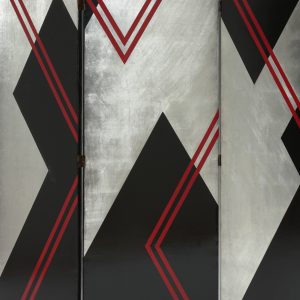
Fold It, Bend It, Shape It! Gallery Hunt
Have you ever tried to make a work of art by folding paper or other material? A VMFA gallery map will help you locate several works of art that feature folded constructions or 3-dimensional forms with bends and angles.
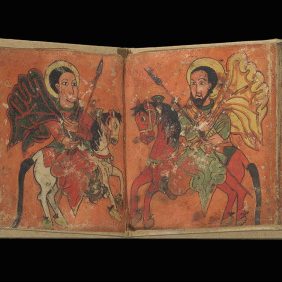
1
Visit the African Art Gallery on Level 2 and find the small room filled with Ethiopian works of art. Look for a work of art that includes this detail. (A detail is a small section of a work of art.)
How is Sensul with Images of Saints like the books you read? How is it different?
Can you see the folded structure that holds the fragile pages of the sensul in place? It’s called a mount. Did you know that museums hire experts to design and make these special devices that support works of art?
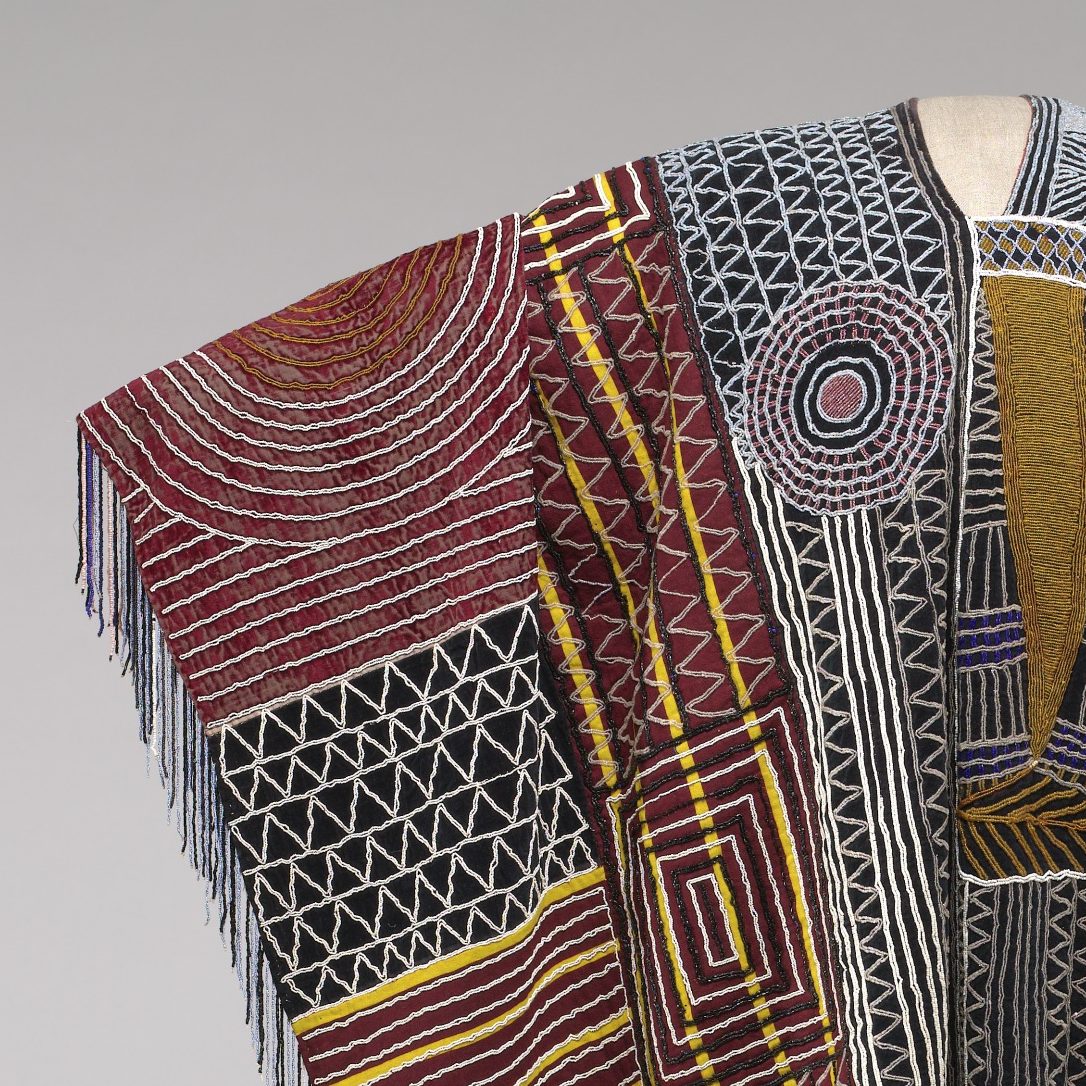
2
In a nearby room in the African Art Gallery, look for the work of art that includes this detail. Who wore this colorful robe? Have you ever made a cape or robe using a piece of cloth?
How do folds and darts change flat cloth into clothing that can be worn by a person?
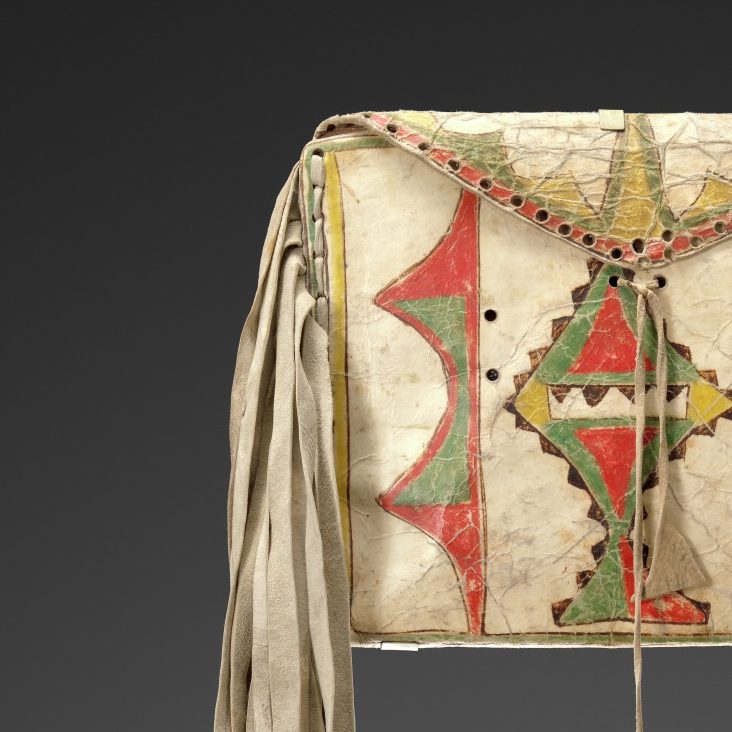
3
Next, visit the Native American Art Gallery just outside the African Art Galleries. Can you find this Flat-Case Parfleche in one of the cases? What was it used for?
Can you see some of the folded edges? Do you think you could make something similar by folding a flat, pliable material? How would you decorate your parfleche?
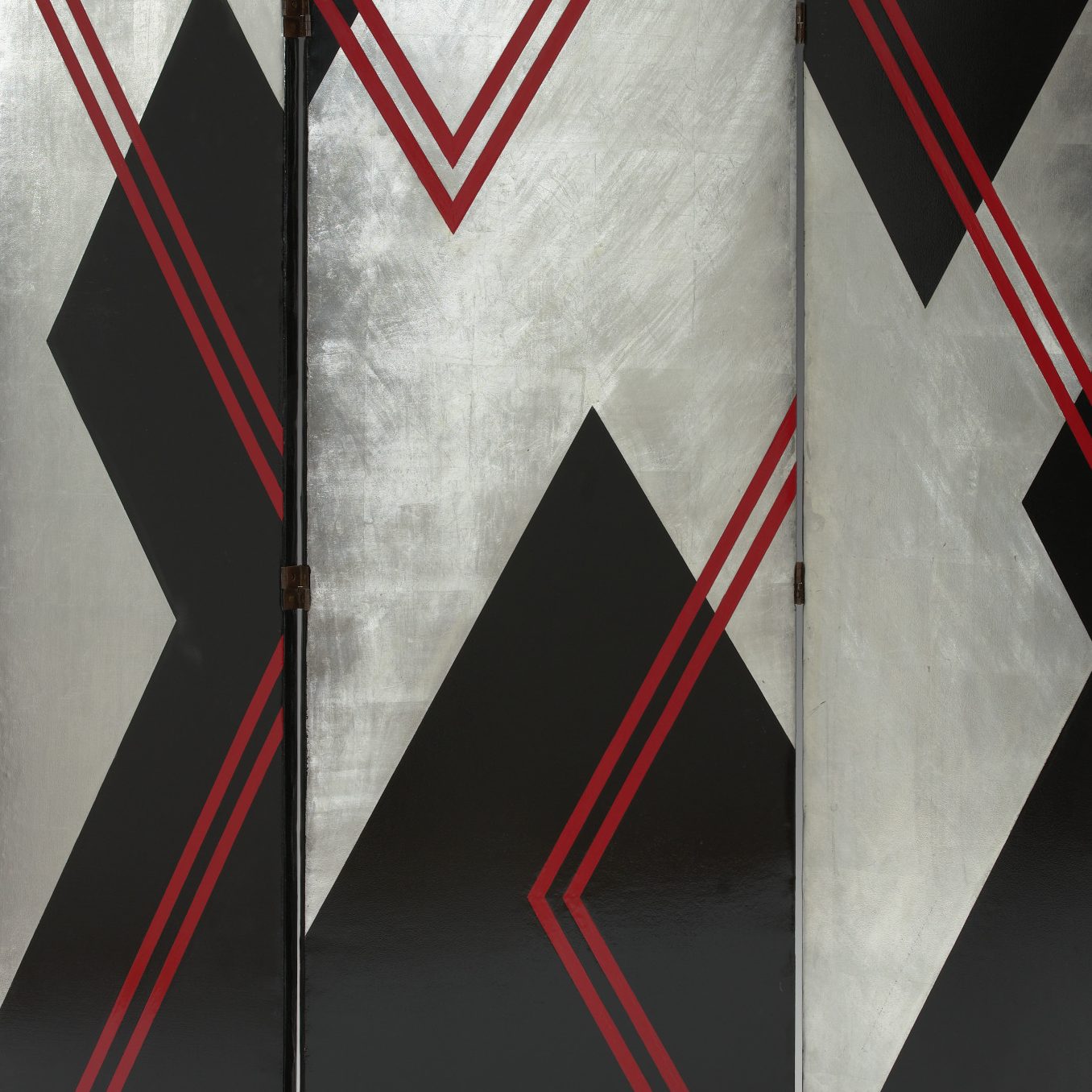
4
Continue your exploration in the Lewis Decorative Arts Gallery on Level 3. Can you find the work of art that includes this detail? How is this construction like the Ethiopian sensul? How is it different? Does the surface design make you think about corners and folds?
If you were going to make a three-panel screen, how would you decorate the surface?
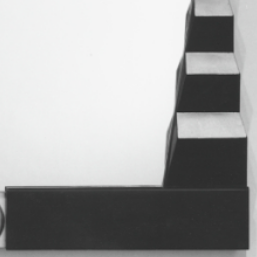
5
Near the three-panel screen in the Lewis Decorative Arts Gallery, look for this detail from a work of art. What is set within the silver and black frame?
How are the angular shapes in this work different from the others you’ve seen on this gallery hunt? Can you think of a way to use bent shapes to solve practical problems?
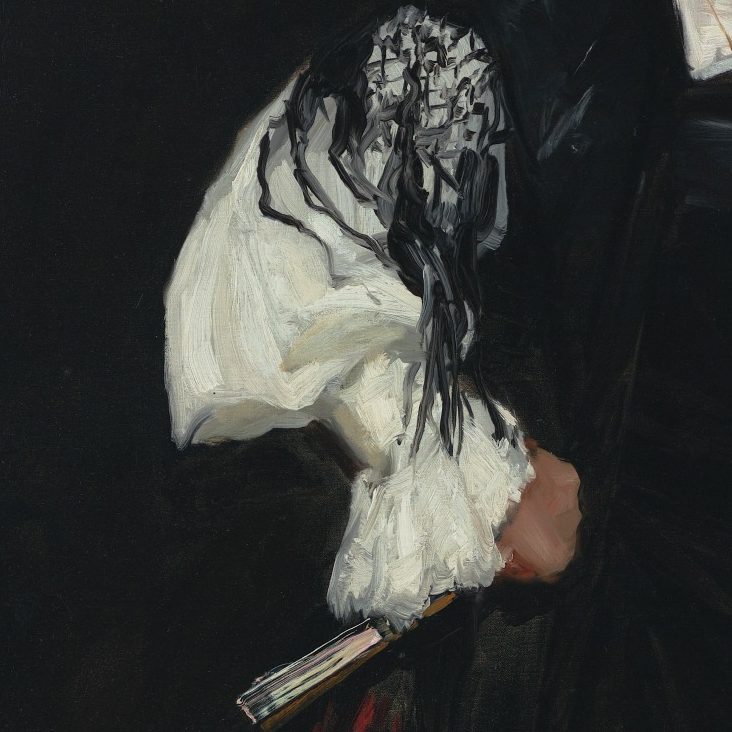
6
To find this work, head down to the American Art galleries on Level 2. Can you tell what this Spanish girl is holding in her hand? How has the artist used paint to create the impression of a three-dimensional form?
Have you ever folded paper to make a fan? Could you make a fan in other ways?
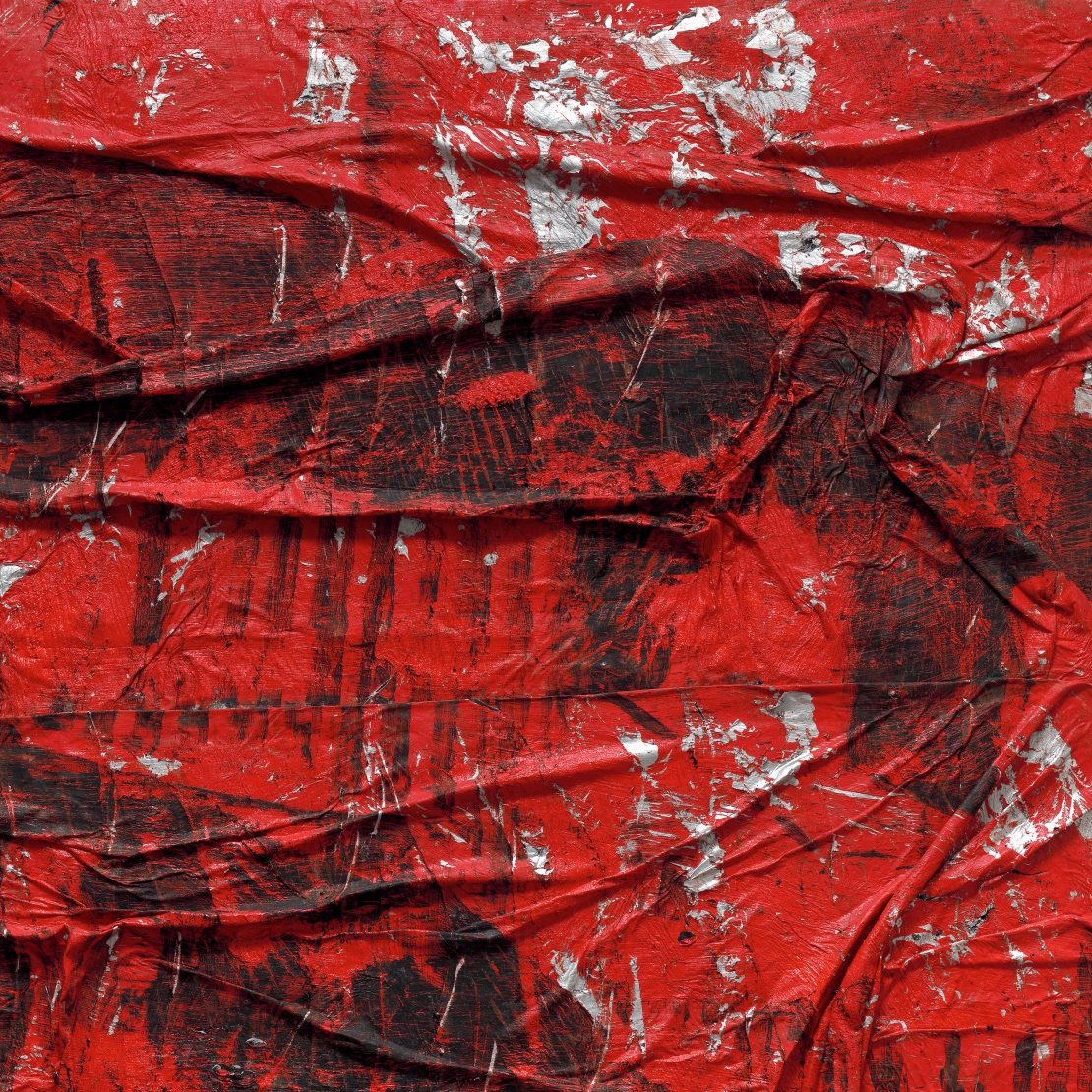
7
To find the work that includes this detail, head down to Level 2 and visit the 21st Century Art Gallery. Angel Otero made this work by letting paint layers dry just long enough to form a skin on top. He then removed the layers of paint, which were still pliable, and creased them to make an interesting surface. Otero used oil paint, but the process works with acrylic paint too! Can you think of other unusual materials from which you could make folded works of art?
Sensul with Images of Saints, 15th century, Ethiopian, Tempera and ink on parchment, Gift of Robert and Nancy Nooter, 2012.301
King's Beaded Robe, early 20th century, Yoruba culture, Nigeria, Republic of Benin, Africa; Glass beads, string, velvet, wool, damask; Kathleen Boone Samuels Memorial Fund and Arthur and Margaret Glasgow Fund, 96.36
Flat Case Parfleche, ca. 1875, Native American, Yakama Culture, buffalo rawhide, tanned hide, pigments, From the Robert and Nancy Nooter Collection, Arthur and Margaret Glasgow Endowment, 2015.18
Donald Deskey, American, 1894–1989 (Designer); Deskey-Vollmer, Inc., American (New York City), 1927–1931 (Maker), Three-Panel Screen (for Glendon Allvine residence, Long Beach, New York), ca. 1928, Oil on canvas, metal leaf, wood, Gift of the Sydney and Frances Lewis Foundation, 85.62
Gustave Miklos, Hungarian (active in France), 1888–1967 (Artist); Jean Dunand, Swiss (active in France), 1877–1942 (Lacquerer), Mirror, Lacquer, wood, mirrored glass, Gift of Sydney and Frances Lewis, 85.176.2
Robert Henri, American, 1865-1929, Spanish Girl of Madrid, 1908, Oil on canvas, J. Harwood and Louise B. Cochrane Fund for American Art, 90.138
Angel Otero, American, born Puerto Rico, 1981 (Artist), Untitled (SK-MY), 2013,
Oil paint and oil paint skins collaged on canvas, Pamela K. and William A. Royall Jr. Fund for 21st Century Art and Aldine S. Hartman Endowment Fund, 2014.6






